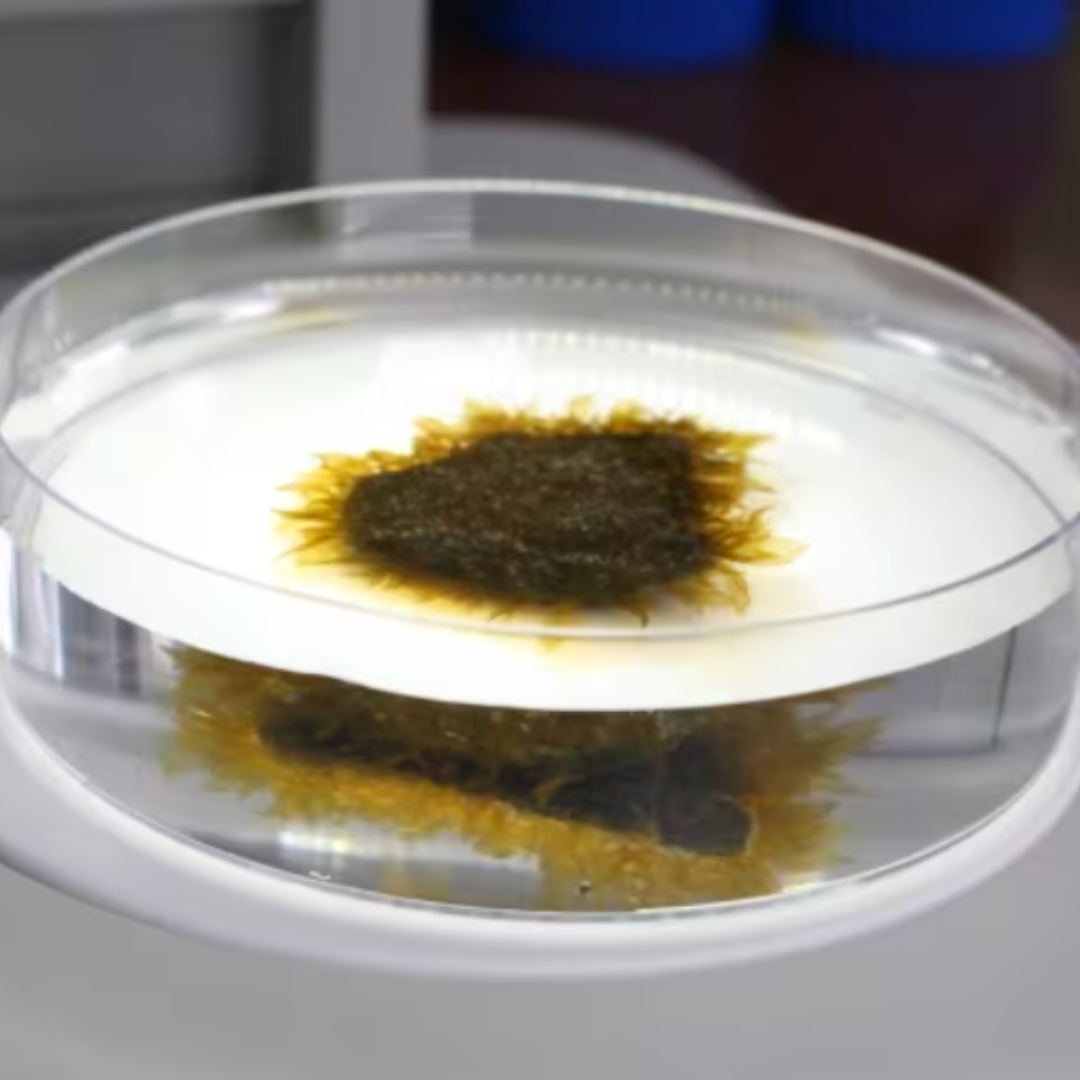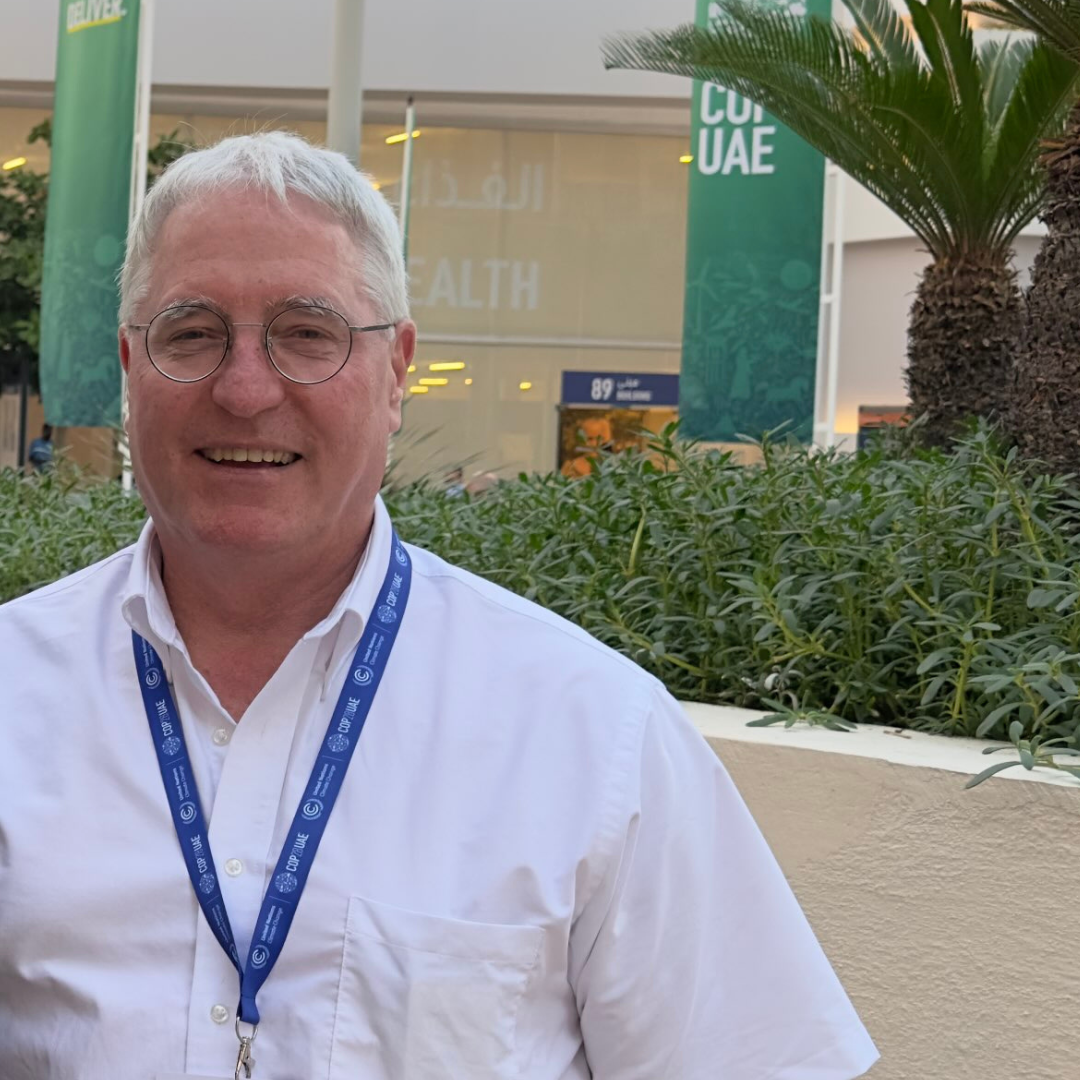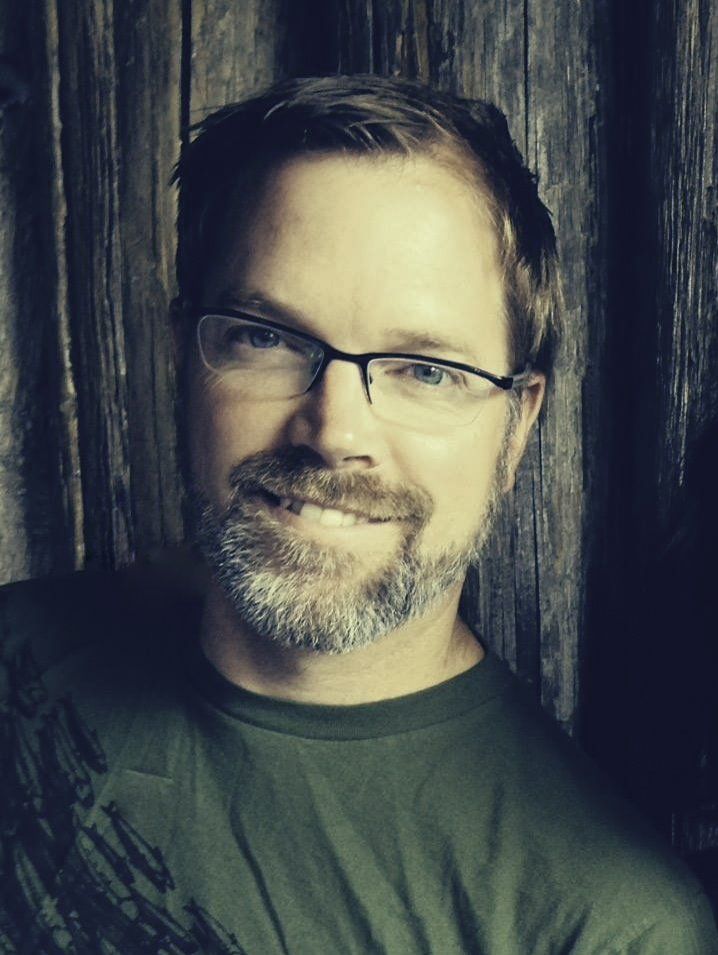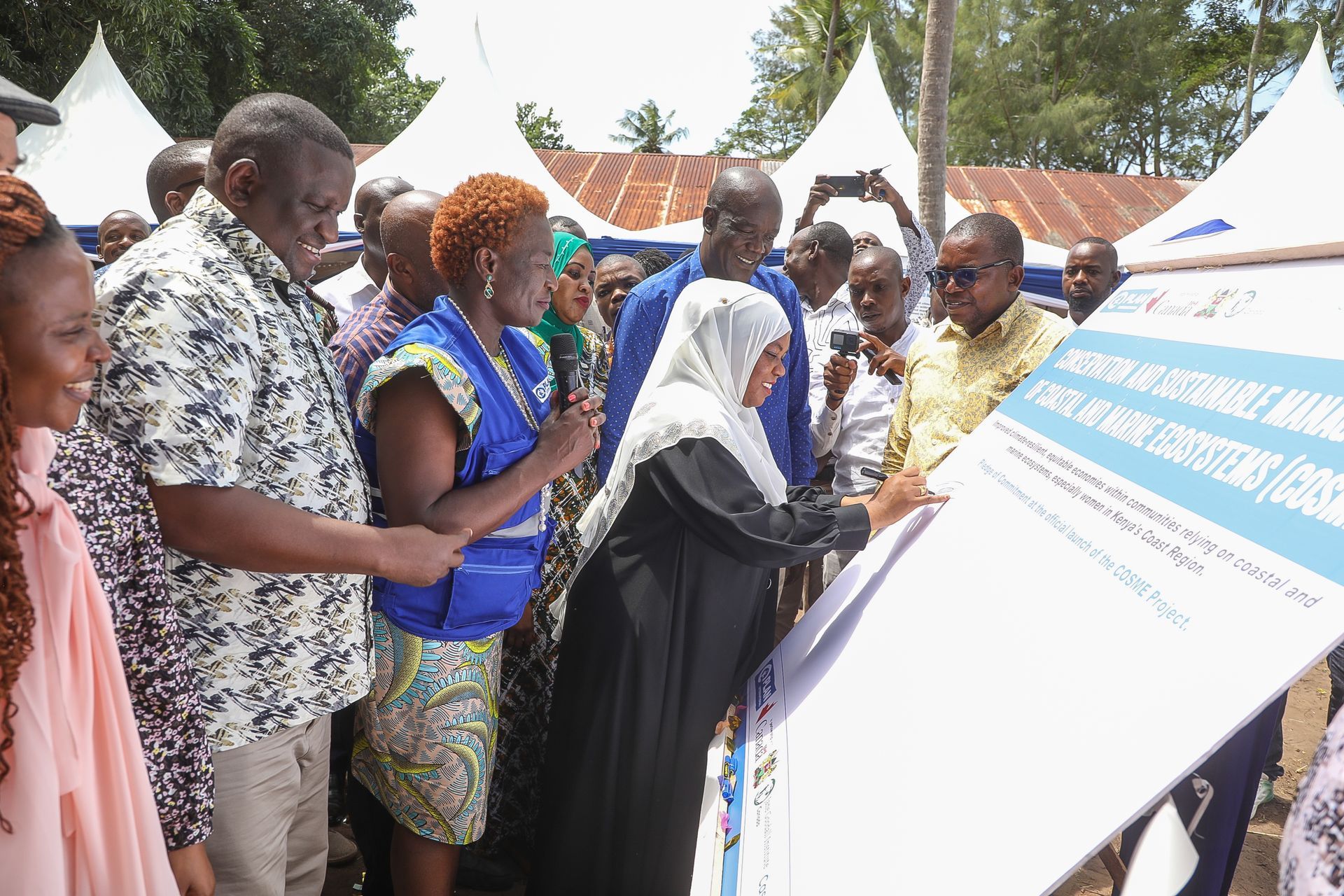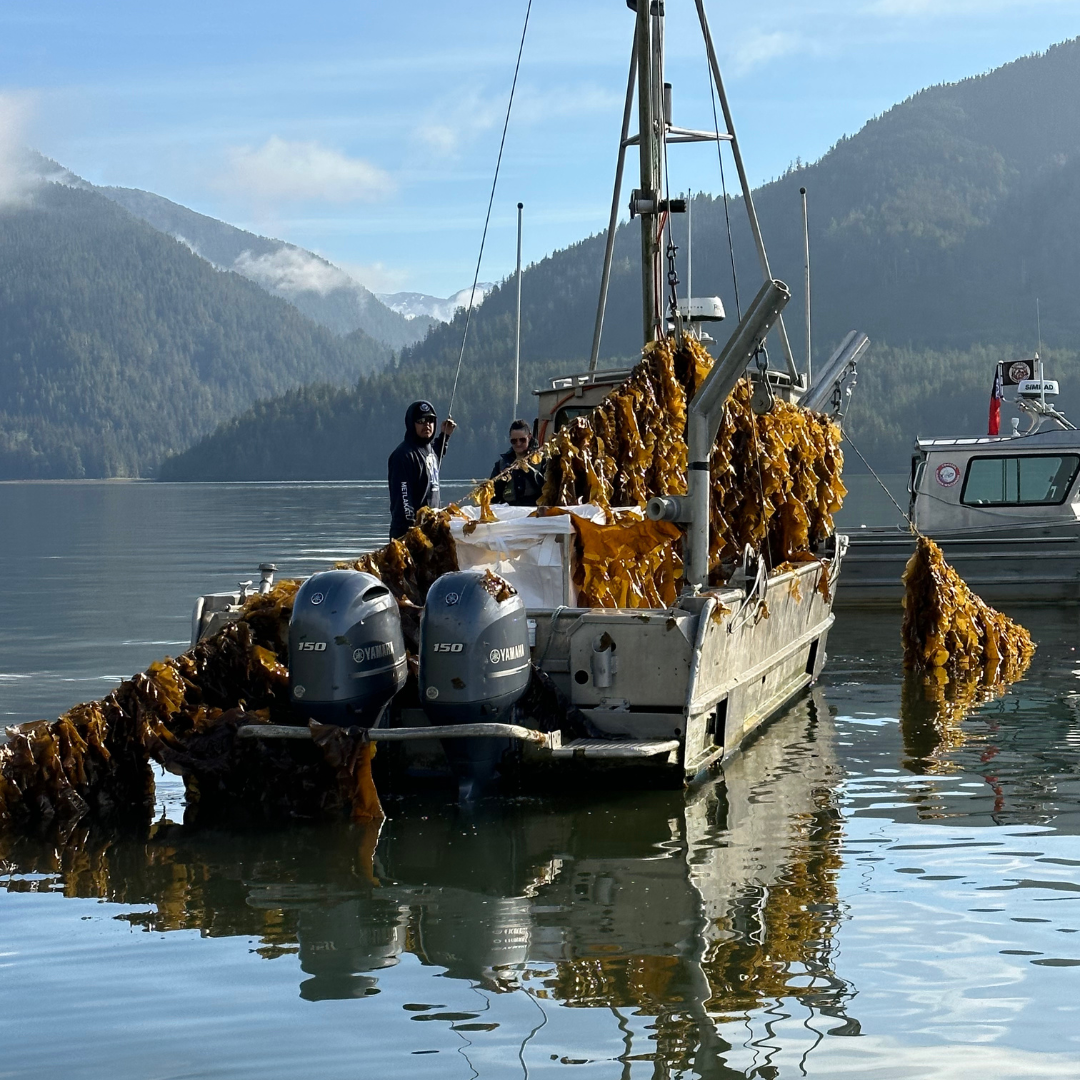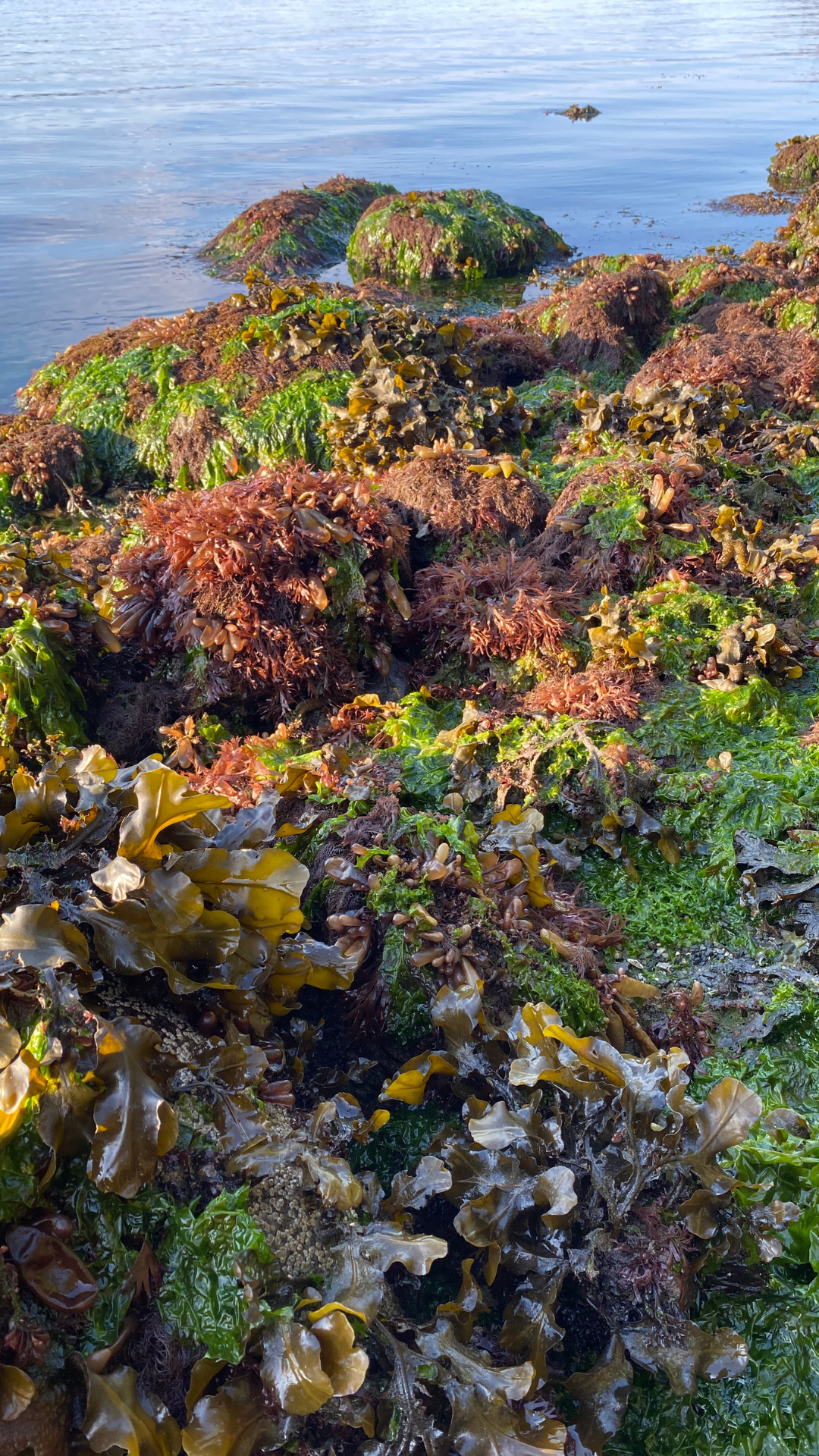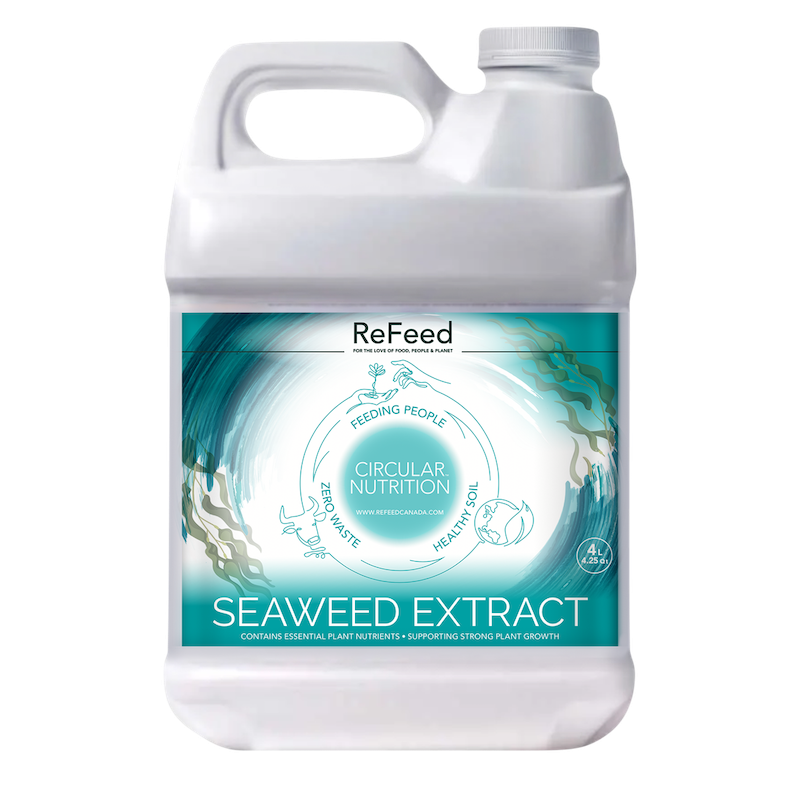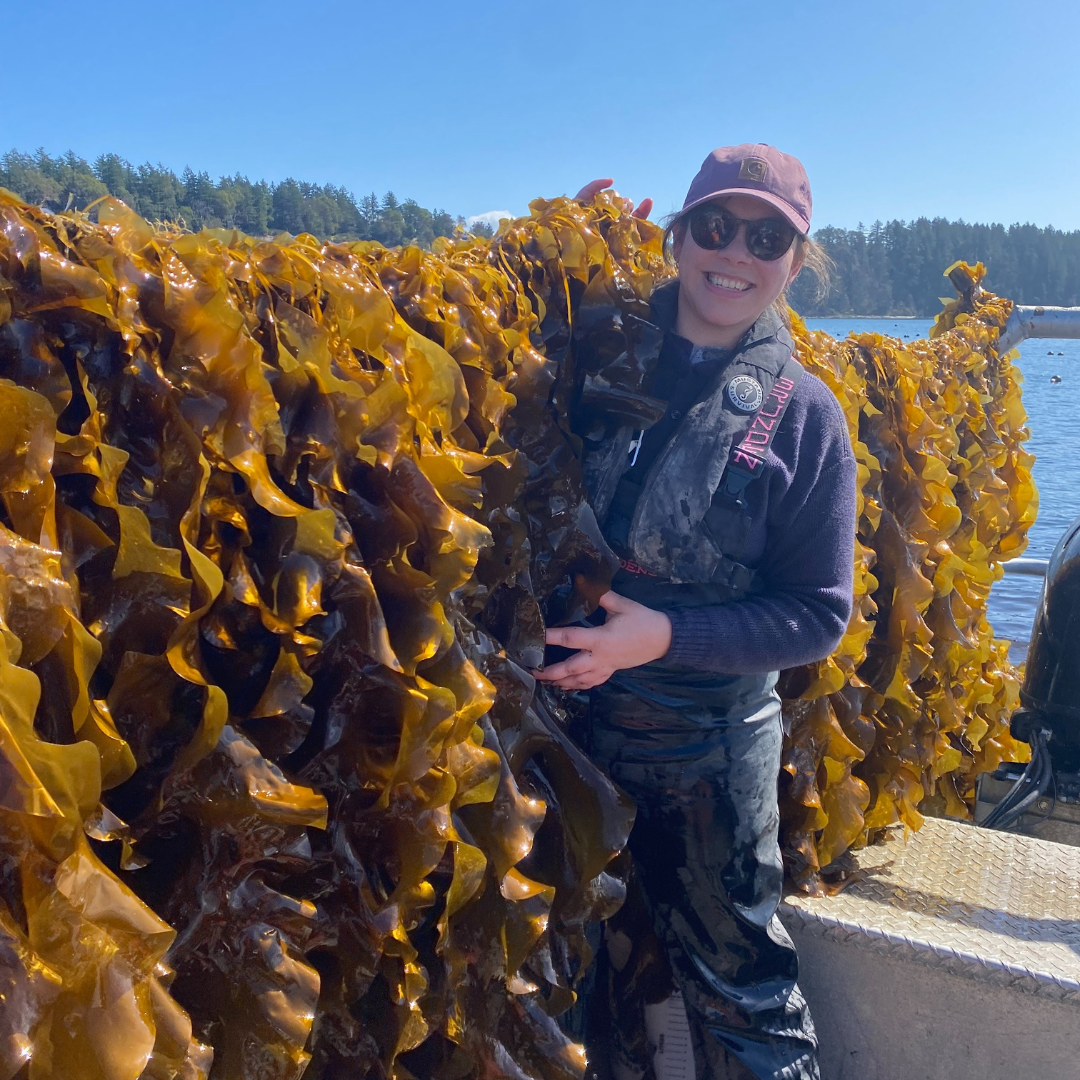At Cascadia Seaweed, we cultivate local species of seaweed and manufacture products for crop and cattle farmers.
On the coastline of the Pacific Northwest you can find a red seaweed known as Devaleraea mollis, or as we call it at Cascadia Seaweed, ‘Pacific Dulse’, named after a similar seaweed called Palmaria palmata, commonly called ‘Dulse’ that is found on Atlantic coasts. They can be recognized by their leathery, rosé colored, hand-shaped fronds and are most easily spotted during spring.
Like many red seaweeds (Rhodophyta), Pacific Dulse has a complex life cycle with 3 different life stages. At Cascadia Seaweed’s land-based culture facility, on the unceded traditional territory on the Snuneymuxw First Nation, the dulse’s life cycle is a lot simpler. Because Pacific Dulse is a perennial species it can grow quite happily for several years and reproduce through fragmentation and division in a ‘tumble culture’. When the dulse is grown in a tumble culture tank system, the individual dulse (AKA rosettes) can be broken apart either by the natural tumbling of water in the tank or fragmented by hand to create a clone of that individual. However, land-based cultivation isn’t without its challenges, and Pacific Dulse, having undergone thousands of years of evolution in the intertidal, requires specific light, temperature and nutrients to grow into the long, red fronds like their wild counterparts. One of the greatest challenges to land-based systems is to crack the code on how to create an artificial ecosystem for healthy growth and development of this seaweed.
"As Dulse is rich in iodine, calcium, iron, potassium, manganese and fibre, it has long been harvested for nutraceutical purposes."
But the hours of tests, trials, failures and successes are well worth the effort along the way to establishing a land-based culture. As Dulse is rich in iodine, calcium, iron, potassium, manganese and fibre, it has long been harvested for nutraceutical purposes. Land-based culturing helps to relieve harvesting stress on wild populations that have cultural significance to many coastal First Nations, and ensures that cultural practices are maintained and ecosystems preserved. For centuries on Canada’s east coast the Mi’kmaq people have harvested an Atlantic species of Dulse (Palmaria palmata) as a dietary staple, for relieving sore muscles and other medicinal purposes. In the Pacific Northwest, many First Nations have harvested Pacific Dulse among other red algae species for cooking and eating raw, dipping in eulachon grease, and used to alleviate indigestion. In recent years dulse has gained interest for plant-based diets as a cruelty free way of receiving Vitamin B12 and Omega-3, and is often referred to as the bacon-of-the-sea, a term coined by researchers at OSU’s Hatfield Marine Science Centre for the dulse strain they cultivated to have a smoky, meaty flavour when fried. Not to mention Oregon State faculty member Chuck Toombs citing dulse as having twice the nutritional value of kale.
While Pacific Dulse gains popularity for its nutritional benefits, establishing land-based cultures is just one piece of the puzzle in creating sustainable food systems without the large carbon footprint. Growing seaweed on land takes up very little space and only requires sunlight, seawater, and the occasional addition of nutrients. The most energy consuming aspect of land-based cultivation comes from pumping seawater and supplementary lighting that, in the future, can be powered entirely by renewable energy sources.
Pacific Dulse is still yet to be a staple in the diets of many Canadians, but as the seaweed industry grows it’s only a matter of time before we start seeing this nutritious red algae as a common feature on our plates.
"Dulse is such a fantastic source of fibre, iodine, calcium, and other important nutrients. It offers some of the highest protein content of all seaweed species, has a rich flavour profile and a delectable texture! We look forward to including this incredibly tasty and good-for-you seaweed into our Kove products once we reach commercial production at our facility!"
- Desirée Dupuis, VP of Sales and Marketing
More about our tank-based operation
The operation is located in Cedar, BC. Our space has capacity for 10 tanks which are supplied with water via a marine intake from offshore waters. The seawater is filtered through sand filtration, 5 micron screens and UV sterilization.
The Dulse is grown in a tumble culture which is generated through an aeration system. Each tank has temperature control and LED lighting to control the environmental parameters to optimize growth. Additional nutrients and water conditioning allow optimal growing conditions to be maintained year round in indoor and outdoor settings.
Once fully operational at a commercial scale this will provide a continuously harvestable crop of red algae, and the facility gives us the capability to grow other tank based species such as
Ulva spp.( Sea Lettuce) and
Asparagopsis spp.
Article by Lauren Krzus
Cultivation Technician at Cascadia Seaweed
Lauren loves seaweed and the benefits that they have for human and environmental health. Lauren received a Bachelor of Science from the University of Western Australia and a Post-degree Diploma in Fisheries and Aquaculture from Vancouver Island University. Since working as a research assistant at the Indian Ocean Marine Research Centre and Deep Bay Marine Field Station, and as an Environmental Educator at Ocean Ambassadors Canada, Lauren now calls the Pacific Northwest her second home and hopes to contribute to creating sustainable food systems and food security for coastal communities.

C - 9774 Third Street Sidney British Columbia V8L 3A4
Email: info@cascadiaseaweed.com
Phone: 1-778-351-4484
9774 - C Third Street Sidney British Columbia V8L 3A4
Email: info@cascadiaseaweed.com
Phone: 1-778-351-4484




